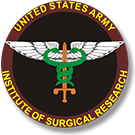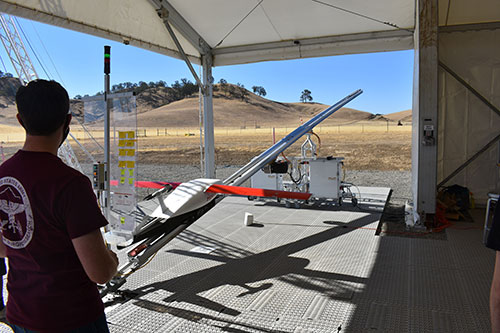Delivering Blood to Point of Injury on the Battlefield
Research scientists at the U.S. Army Institute of Surgical Research (ISR) at Joint Base San Antonio-Fort Sam Houston, Texas, know that blood loss, or hemorrhage, is the leading cause of preventable death on the battlefield. To mitigate that problem, a team of scientists assigned to the ISR Blood and Shock Resuscitation Combat Casualty Care Research Team 1 (CRT1) are investigating a new method to get blood to combat wounded at the point of injury.
"We want to maximize patient survivability and return to duty, and so providing blood to the point of injury is one of the best things we can do," said M. Adam Meledeo, Ph.D., an ISR research scientist. "We've known for a long time that providing blood as close to the point of injury as possible is critical for resuscitating the hemorrhaging patient, but supplies have always been limited because blood must be stored cold to maintain its function."
The new method that Meledeo and members of CRT1 are exploring for delivering blood and blood products to injured service members in austere and distant locations on the battlefield are unmanned drones. The ISR is collaborating with Zipline, a California-based company that operates the drones and is focused on delivering medical supplies in areas with poor infrastructure. The ISR team saw firsthand how the drones are operated, and were also able to determine if any changes were made to the blood products being delivered.
"As part of our collaboration with Zipline, we were invited to visit their testing facility outside Esparto, California, to look at how the drone launching system, the flight, and the parachute dropping of the payload would affect blood's function," added Meledeo. "We brought a number of different blood testing devices with us and analyzed samples before and after flights for comparison to see if the blood was damaged in any way. All tests showed essentially no effect of using the drones to transport blood, which was a good sign for the technology."
According to Meledeo, the use of drones for delivering medical supplies has been used before. Drones have been used to deliver medical supplies and biologics to rural areas across mountain ranges and in bad weather in Uganda and Rwanda.
"The Marine Corps have used these drones in an exercise in Australia as well with great success," Meledeo said. "The technology is ready, although advances continue to be made to accommodate specific military requirements."
This technology could assist medics on the battlefield who can only carry one to two units of blood at a time. The drones being tested can deliver double that amount or more which could mean the difference between life and death in some cases.
"Technologies such as this provide the capability to rapidly air drop blood or other critical supplies with a small, unmanned vehicle, to a tightly targeted location, supplementing the available supply and extending the time a casualty can be maintained before evacuation," said Meledeo.
During the visit to California, Meledeo met with Congressman John Garamendi (CA-3) and his staff who were very interested with the work performed by the ISR team in furthering the ability to improve battlefield care of our service members. Meledeo stressed to the congressman and his staff that this effort was made possible by the combined efforts of the ISR, the Armed Services Blood Program, Armed Service Whole Blood Processing Lab (ASWBPL)-East, ASWBPL-West, and the 440th Medical Detachment Blood Support.
"I also stressed the need for research and technologies such as these to continue to be funded in support of combat wounded," said Meledeo.














